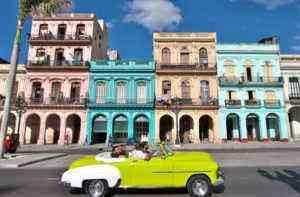Fodor's Expert Review Castillo de San Carlos de la Cabaña
In 1762 Lord Albemarle took El Morro for the English after a 44-day siege. A year later, Carlos III recovered Cuba in exchange for Florida and promptly ordered the construction of what was then the largest fort in the Americas. Sprawling across the hill east of El Morro, the fortress was named for the Spanish king and for the typical Cuban cabanas or bohíos (cabins) that once occupied the site. With the capacity to house 1,000 troops, this immense bastion was said to be so big that Carlos was given a telescope with which to admire it from Madrid.
The infamous Foso de los Laureles (Graveyard of the Laurels) was the execution wall where hundreds died during the wars of independence. The 9 pm ceremonia del cañonazo (ceremony of the cannon shot) is a must-see event filled with nostalgia and mystery. First, a lamplighter lights the gas lanterns. Then, a crier (a recruit with a voice so good he's been signed on permanently even though his military service... READ MORE
In 1762 Lord Albemarle took El Morro for the English after a 44-day siege. A year later, Carlos III recovered Cuba in exchange for Florida and promptly ordered the construction of what was then the largest fort in the Americas. Sprawling across the hill east of El Morro, the fortress was named for the Spanish king and for the typical Cuban cabanas or bohíos (cabins) that once occupied the site. With the capacity to house 1,000 troops, this immense bastion was said to be so big that Carlos was given a telescope with which to admire it from Madrid.
The infamous Foso de los Laureles (Graveyard of the Laurels) was the execution wall where hundreds died during the wars of independence. The 9 pm ceremonia del cañonazo (ceremony of the cannon shot) is a must-see event filled with nostalgia and mystery. First, a lamplighter lights the gas lanterns. Then, a crier (a recruit with a voice so good he's been signed on permanently even though his military service ended years ago) begins an eery plainsong chant that reverberates throughout the fortress and, when the wind is right, across the bay to La Punta: "Silencio; ha llegado la noche / Las luces están encendidas / Nuestro cañon se llama Capitolino / A las nueve sonará" ("Silence; night has fallen / The lanterns are lit / Our cannon is named Capitolino / At nine it will sound"). Finally, a detail of some half-dozen soldiers dressed in scarlet 18th-century uniforms marches in and loads and fires the cannon, which makes a deafening noise (cover your ears).
La Cabaña's two museums are of moderate interest. The Museo de la Cabaña documents Cuba's military history, and the Museo del Che is dedicated to the life of Ernesto "Che" Guevara, who ranks alongside José Martí as one of Cuba's national martyrs.
READ LESS



